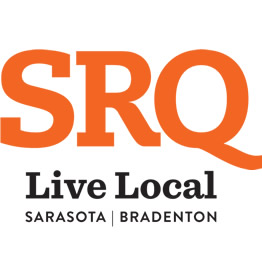As difficult as it may seem, many Americans in the early 1900s viewed automobiles with suspicion. After all, these new machines were no match for the horses.
It may take major disruptions to alter entrenched perspectives, but necessity is a powerful agent of change.
This was the case in San Francisco in 1906 when a magnitude 7.9 earthquake followed by a fire devastated the city. With horses injured or unwilling to venture down cracked streets lined with burning buildings, the power of automobiles to reach the injured – to help save lives – has become apparent. Views have changed.
It’s an old story: innovators and early adopters of change are sometimes ridiculed, or worse. Yet, as we well know, history tends to vindicate, even celebrate, nimble thinkers, risk takers, and dreamers.
More than two years into a pandemic, our nation has been rocked by the stark realization that the pandemic has not caused seismic shifts in our culture and demographics, but has revealed widespread underlying fault lines. occurring, though less visibly, over a generation or more. No segment of our society is more sensitive or reflective of these rapid changes than education.
Just as people must embrace agility and adaptability to succeed in a landscape that seems to be changing at lightning speed, so do the larger systems that sustain our society.
This includes K-12 education, which presents a pressing need for model-focused, yet flexible, innovation to effectively and productively handle today’s serious challenges.
We are facing a mental health crisis among K-12 students. We face persistent achievement gaps. We are facing a shortage of teachers. (A January 2022 National Education Association poll found that 55% of teachers intend to leave the profession sooner than expected.)
We face a changing economy that demands young people graduate with new skills and new ways of thinking. We face shifting perceptions that sometimes lead to contentious debates about institutional authority versus individual rights in educational settings.
Today, the traditional status quo is not working.
It takes innovative thinkers willing to take risks and symbolically drive down inhospitable streets to reach struggling students and teachers, families and school leaders.
The Foundation Model for Education, which connects innovative thought leaders, invested stakeholders and philanthropists, and school districts to support students and teachers, and to test new ideas, innovate in the educating and taking risks is a way to initiate the necessary changes.
I see innovation in action through my roles as President and CEO of the Sarasota County Education Foundation and Membership Chair of the Florida Consortium of Education Foundations. The most effective foundations have the ability to spur innovation and address pressing needs so that students and teachers can thrive.
One of our state’s education foundations has done pioneering work to close the literacy gap between elementary school girls and boys. Abandoning a one-size-fits-all approach, educators adopted different strategies to teach boys and girls. The successful pilot program now reaches 10 schools.
In Sarasota County, the Education Foundation, recognizing the urgent need to prepare high school students for college, career and life, collaborated in 2018 to open our first two Student Success Centers . Since then, we have opened three more. The annual increase in the number of visitors to the centers and the level of preparation with which many underserved students graduate are testament to our innovative solution to an access problem and the need to foster relationships that make a difference.
Education foundations understand the challenges faced by school districts and local communities without losing sight of national issues. They can mobilize quickly and test new ideas. Sometimes these tests don’t go as planned, but many innovations have been born out of so-called failed ideas.
Unfortunately, as the demands of certain groups and individuals grow louder and more vitriolic, the pressing needs and valid fundamental reasons for change can be drowned out. It is difficult, if not impossible, to discuss ideas that lead to productive change when the parties involved are on either side of a widening chasm and shouting accusations at each other.
To bring about large-scale innovations and change, all participants need a forum where ideas can be presented, challenges and barriers can be identified, and solutions can be crafted in a respectful environment.
I am not naïve enough to believe that any one organization can find the perfect solution to the adversarial atmosphere that has developed in education, but I am convinced that we can achieve more productive change if we let’s unite to improve the educational model, as opposed to tearing down the people who work in education every day.
In the automotive industry, hybrid and electric vehicles are helping to tackle the energy and climate crises. Doubters scoff, just like it was in 1906 just before the ground started to shake in San Francisco. Yet new ideas continue to emerge that create solutions and hope. I trust in the power of education innovators to catalyze change and create solutions that best meet the needs of students and teachers.
To our neighbours, friends and all members of the community who believe in the power of innovation and recognize the dynamic effect when innovation and education intersect: we are looking for people who want to bring about productive change. If this describes you, we invite you to contact us.
Jennifer Vigne is President and CEO of the Sarasota County Educational Foundation.


